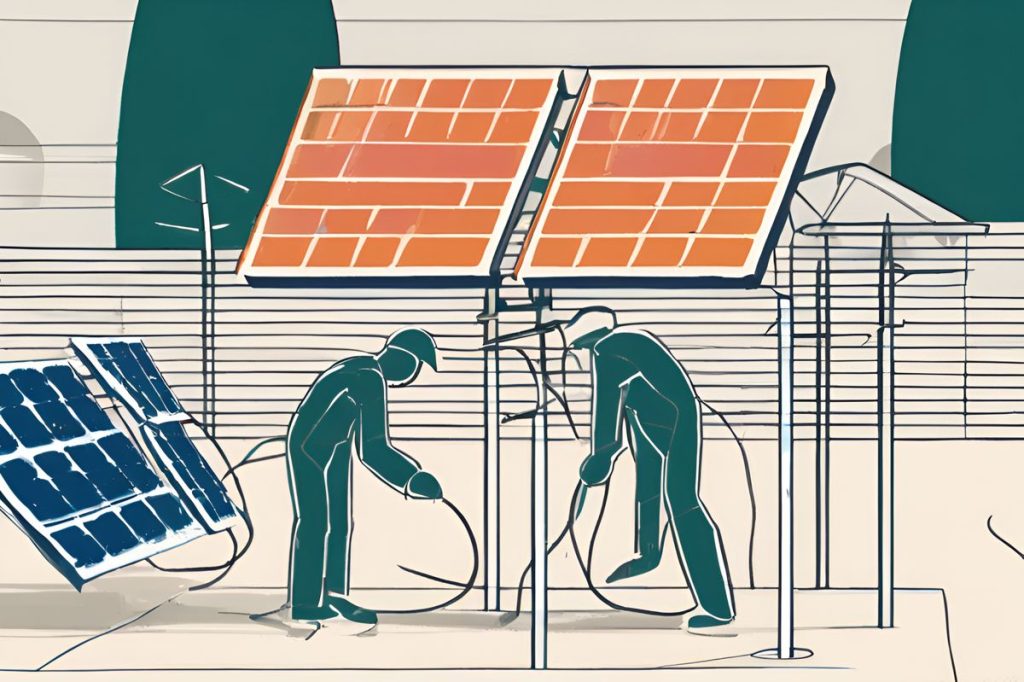The bicommunal solar farm project proposed for Nicosia’s buffer zone aims to generate 30 to 50 megawatts of renewable energy, symbolizing cooperation between Greek Cypriot and Turkish Cypriot communities and aligning with the European Green Deal for environmental, economic, and social benefits. This visionary initiative, spearheaded by mayoral candidate Nikos Tornaritis, not only highlights the potential of harnessing solar power in an area abundant with sunlight but also serves as a beacon of unity and sustainability for a brighter future in Cyprus.
What is the bicommunal solar farm project proposed for Nicosia’s buffer zone?
The proposed bicommunal solar farm in Nicosia’s buffer zone is a visionary renewable energy project aimed at generating 30 to 50 megawatts. It symbolizes cooperation between Greek Cypriot and Turkish Cypriot communities, aligns with the European Green Deal, and promises environmental, economic, and social benefits.
A Visionary Project for Renewable Energy
The idea of harnessing the power of the sun has never been more prominent in the Cypriot consciousness than now. Nikos Tornaritis, a mayoral candidate for Nicosia and current Disy MP, has put forward a visionary plan: the construction of a bicommunal solar farm. This project aims to be situated in the buffer zone of the city, a place historically marked by division, yet now possibly a symbol of cooperation and a greener future.
During a conversation with Myrto Zambarta, the head of the European Commission’s delegation in Cyprus, Tornaritis reignited the spark of an initiative initially proposed by the European Commission’s President Ursula von der Leyen back in 2022. The proposed solar farm is expected to generate an impressive output of 30 to 50 megawatts, demonstrating the potential of renewable energy in an area known for its abundant sunlight.
Collaboration and History
The plan is not just about energy. It’s also about collaboration. Tornaritis has expressed a desire for the Nicosia Municipality to become a “key partner” in realizing this ambitious plan. He highlights that Nicosia has a rich history of collaborative ventures that transcended communal boundaries, such as the unification of the city’s sewerage systems by mayors Lellos Demetriades and Mustafa Akinci during the 1980s.
A bicommunal solar farm would not only serve as a testament to the enduring spirit of cooperation between the Greek Cypriot and Turkish Cypriot communities but also as a stepping stone towards meeting the energy needs of both sides. The project aligns with the goals set by the European Green Deal, striving to increase the share of renewable energy in the region’s mix and paving the way for a sustainable future.
Renewable Energy: The Path Forward
Renewable energy sources have increasingly become a focal point for future planning given their potential to reduce carbon emissions and dependency on fossil fuels. The Nicosia Municipality’s involvement in this solar farm project underscores its commitment to playing a leading role in a significant European undertaking. Tornaritis sees “great possibilities in utilizing renewable energy sources” and envisions the municipality as a protagonist in this narrative of progression and innovation.
The potential benefits of such a project extend beyond environmental impact. Renewable energy is becoming more economically viable, with the cost of solar power dropping significantly in recent years. Investing in such technologies can also lead to job creation and a bolstering of the local economy, providing a win-win scenario for all parties involved.
Harnessing the Sun for Unity and Sustainability
The proposal of a bicommunal solar farm in the Nicosia buffer zone is more than just an energy project—it’s a beacon of hope for unity, cooperation, and a sustainable future. As the world looks increasingly towards green solutions, initiatives like this one are critical in setting a precedent for others to follow. By blending history, innovation, and the natural resources at hand, Nicosia can lead the way in demonstrating how renewable energy can be a foundation for peace and prosperity.
What are the goals of the bicommunal solar farm project proposed for Nicosia’s buffer zone?
The bicommunal solar farm project aims to generate 30 to 50 megawatts of renewable energy, symbolizing cooperation between Greek Cypriot and Turkish Cypriot communities. It also aligns with the European Green Deal and promises environmental, economic, and social benefits.
How does the bicommunal solar farm project align with the European Green Deal?
The bicommunal solar farm project aligns with the European Green Deal by promoting renewable energy sources to reduce carbon emissions and dependency on fossil fuels. It aims to increase the share of renewable energy in the region’s energy mix, contributing to a more sustainable future.
What historical and collaborative significance does the bicommunal solar farm project hold?
The project serves as a testament to the enduring spirit of cooperation between the Greek Cypriot and Turkish Cypriot communities. It follows a history of collaborative ventures in Nicosia, such as the unification of the city’s sewerage systems in the past. The project represents a stepping stone towards meeting the energy needs of both communities.
How can the bicommunal solar farm project benefit the local economy and community?
Investing in renewable energy technologies like the bicommunal solar farm can lead to job creation and economic growth. Additionally, the project can bolster the local economy by providing opportunities in the renewable energy sector, contributing to a sustainable and prosperous future.

